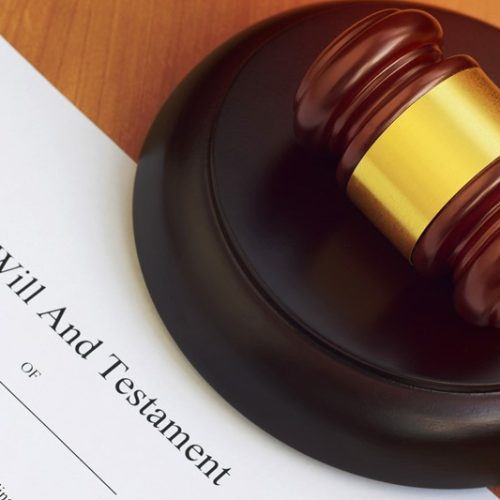

Certain buildings, land, works of art, and other objects of national significance may be exempt from Inheritance Tax and Capital Gains Tax (CGT) when they are transferred to a new owner. This exemption applies under a special tax relief for national heritage assets that are either gifted or bequeathed.
To qualify for this relief, the asset must meet at least one of the following criteria:
Upon transfer of ownership, the new owner is required to enter into a formal agreement, known as ‘the undertakings. This agreement ensures that the asset will be cared for, made available for public viewing, and retained in the UK. Failure to meet these conditions, or selling the asset, results in the revocation of the tax exemption under the Conditional Exemption Tax Incentive scheme. As a consequence, the asset would then be subject to tax in accordance with the standard rules.
HMRC is guided by the government’s heritage advisory agencies in deciding which assets qualify for exemption.

Trustees must manage assets, follow tax rules, and register with HMRC where required.
A trust is a legal arrangement in which a trustee, either an individual or a company, is entrusted with managing assets such as land, money, or shares on behalf of others. These assets, placed into the trust by a settlor, are managed for the benefit of one or more beneficiaries.
Trustees are responsible for deciding how the trust's assets are to be managed, distributed, or retained for future use. They are also accountable for reporting and paying any tax due on behalf of the trust. If the trust pays or owes tax, it must be registered with HMRC.
Income received by a trust is subject to varying rates of Income Tax, depending on the type of trust.
Discretionary (or accumulation) trusts: Trustees pay tax on the trust's income. The first £500 is taxed at the standard rate. Income above this threshold is taxed at:
Interest in possession trusts: Trustees are similarly responsible for paying tax on income. The rates are:
There are additional trust structures, for example, bare trusts and settlor-interested trusts, which are subject to different rules and tax treatments. As a result, it is essential to consider both Income Tax and Capital Gains Tax (CGT) implications from the outset when establishing or managing any type of trust.

With the Residence Nil Rate Band (RNRB), families can pass on up to £1 million without IHT
The RNRB is an additional £175,000 Inheritance Tax (IHT) allowance that applies when a person’s main residence is passed to a direct descendant, such as a child or grandchild, after their death. The allowance is available to married couples and civil partners, and it can significantly reduce the IHT liability on family homes.
The RNRB is separate from and in addition to the standard IHT nil-rate band of £325,000. When combined with the standard threshold, a married couple or civil partners can potentially pass on up to £1 million tax-free to their direct descendants. This figure is based on two individuals each having a £325,000 nil-rate band and a £175,000 RNRB.
Importantly, any unused portion of the RNRB from the first spouse or civil partner to die can be transferred to the surviving partner, provided a claim is made to HMRC when the second partner dies. This transfer is not automatic and must be claimed. This is usually done by the executor of the estate during administration.
The RNRB is subject to tapering for larger estates. For estates valued over £2 million, the RNRB is reduced by £1 for every £2 over the threshold. As a result, estates significantly exceeding £2 million may lose the RNRB entirely, even if the home is passed to direct descendants.

Married couples can pass on up to £1 million tax-free if they plan their estates carefully.
The Inheritance Tax (IHT) nil-rate band is currently £325,000. This means there is normally no IHT to pay if an estate is valued below this threshold. This amount can be higher if you leave everything above the £325,000 threshold to your spouse, civil partner, a charity or a community amateur sports club.
In addition, there is an IHT residence nil rate band (RNRB) of £175,000. This is a transferable allowance for married couples and civil partners (per person) when their main residence is passed down to a direct descendent such as children or grandchildren after their death. The allowance is available to the deceased person’s children or grandchildren.
Any unused portion of the RNRB can be transferred to a surviving spouse or partner. The RNRB is in addition to the £325,000 nil-rate band. The allowance is available to the deceased person's children or grandchildren. Taken together with the current IHT limit of £325,000 this means that married couples and civil partners can pass on property worth up to £1 million (£325,000 x 2 plus £175,000 x 2) free of IHT to their direct descendants.
The transfer does not happen automatically and must be claimed from HMRC when the second spouse or civil partner dies. This is usually done by the executor making a claim to transfer the unused RNRB from the estate of the spouse or civil partner that died first.
There is a tapering of the RNRB for estates worth more than £2 million even where the family home is left to direct descendants. The additional threshold will be reduced by £1 for every £2 that the estate is worth more than the £2 million taper threshold. This can result in the full amount of the RNRB being tapered away.

Despite intense lobbying by the farming community, the proposed reduction in IHT Business and Agricultural Property reliefs are included in the draft Finance Bill 2025-26.
On 21 July 2025, the government published draft legislation for Finance Bill 2025-26. The consultation period for the draft legislation is open until 15 September 2025. This comes at a time when the government has seen borrowing in June surge to the second highest level on record and placing further pressure on public finances and increasing the urgency for tax reforms.
The legislation includes confirmation of a significant overhaul of Inheritance Tax (IHT) reliefs that were first announced in the Autumn Budget 2024. These measures faced criticism over their potential impact on small farms and rural communities. However, with the publication of the Finance Bill, these measures now look set to come into effect from 6 April 2026.
The changes will see the introduction of a new £1 million allowance that will apply to the combined value of property in an estate qualifying for 100% business property relief or 100% agricultural property relief. This means that the existing 100% rate of IHT relief will only apply to the combined value of property in an estate qualifying for 100% business property relief or 100% agricultural property relief. The rate of IHT relief will be reduced to 50% for the value of any qualifying assets over £1 million. This means that any assets receiving 50% relief will be effectively taxed at 20% IHT (the full rate being 40%).
This change applies per individual, meaning married couples could potentially pass on up to £3 million tax-free between them (when combined with nil-rate bands).
The government has also confirmed they will reduce the rate of business property relief available from 100% to 50% in all circumstances for shares designated as “not listed” on the markets of recognised stock exchanges, such as AIM. The existing rate of relief will continue at 50% where it is currently this rate and will also not be affected by the new allowance.
It was also announced that the option to pay IHT by equal annual instalments over 10 years interest-free will be extended to all qualifying property which is eligible for agricultural property relief or business property relief.

It was confirmed with the publication of the draft Finance Bill 2025–26 that measures first announced in the Autumn Budget 2024 to bring most unused pension funds and death benefits into the scope of Inheritance Tax (IHT) will start from 6 April 2027. This will significantly extend the IHT net, capturing pensions that were previously excluded. Individuals with sizeable pensions will need to consider these changes with some care, and review their estate planning accordingly.
This measure will affect individuals inheriting estates within the scope of IHT, including beneficiaries of any unused pension funds or death benefits included in those estates. Personal representatives will be liable for reporting and paying any IHT due on unused pension funds and death benefits.
Death-in-service benefits payable from a registered pension scheme and dependants’ scheme pensions from a defined benefit arrangement, or from a collective money purchase arrangement are excluded from these changes and will not be within the scope of IHT.
There were some changes to the original proposals following a technical consultation that closed in January 2025. As a result, personal representatives, rather than pension scheme administrators, will now be primarily liable for reporting and paying IHT on any unused pension funds and death benefits.
This means that pension scheme administrators and personal representatives will need to work together in administering IHT on pensions. There are concerns that this process could lead to multiple issues, including payment delays, greater complexity and GDPR privacy matters.

Lifetime gifts can reduce Inheritance Tax, but survival for seven years and using key exemptions like the £3,000 annual allowance are crucial to making them fully tax-free.
Most gifts made during a person’s lifetime are not immediately subject to Inheritance Tax (IHT). These are known as potentially exempt transfers (PETs) and can become completely exempt from IHT if the person making the gift (the donor) survives for more than seven years after making the gift.
If the donor dies within three years of making the gift, it is treated as if the gift was made on the date of death, and the full rate of IHT may apply. However, if death occurs between three and seven years after the gift, taper relief can reduce the amount of tax payable. The further away from death the gift was made, the lower the tax rate applied, although this only reduces the tax due on the amount above the nil rate band.
It’s important to note that taper relief does not reduce the value of the gift itself, only the tax payable, and it does not apply where the gift is within the nil rate band. Additionally, it does not lower the tax on chargeable lifetime transfers to below the amount originally assessed when the gift was made.
Each tax year, individuals can also take advantage of specific IHT exemptions that allow gifts to be made tax-free, regardless of survival for seven years.
The annual exemption allows you to gift up to £3,000 in total each tax year without adding to the value of your estate for IHT purposes. This amount can be given to one person or shared among multiple recipients. If the full £3,000 exemption isn’t used in one tax year, it can be carried forward, but only for one additional tax year.
The small gift allowance allows you to give as many gifts of up to £250 per person per tax year as you like, as long as no other exemption is used for the same individual. This is ideal for birthday or seasonal gifts made from regular income.
Additionally, you can make tax-free gifts in celebration of weddings or civil partnerships. These are exempt up to £5,000 for a child, £2,500 for a grandchild or great-grandchild and £1,000 for anyone else.

Make regular gifts from your income and avoid inheritance tax. If structured properly, surplus income gifts can support loved ones and stay outside your estate without the seven-year survival rule.
Wealthier individuals can benefit from a lesser-known but highly effective IHT exemption for gifts made out of surplus income. This is particularly useful for structured, recurring gifts such as grandparents helping with school fees or contributing to a child's living expenses.
These gifts may be fully exempt from inheritance tax if they meet three key conditions:
If these criteria are met, the gifts are immediately exempt, they do not require the donor to survive seven years, as is the case with potentially exempt transfers (PETs).
It’s important to note that part of a gift may qualify under this exemption, while the remaining portion may be chargeable or exempt under another rule. However, these rules do not apply to certain types of transfers, including:
The exemption does not override the gift with reservation rules, meaning if the donor retains a benefit from the gifted asset (e.g., continues to live in a gifted property rent-free), the gift may still be treated as part of their estate for IHT purposes.
To take advantage of the income-based exemption, careful consideration has to be given to ensure that these payments form part of the transferor’s normal expenditure and is made out of income and not out of capital. The transferor must also ensure that they are left with enough income for them to maintain their normal standard of living after giving any gifts. HMRC may request evidence such as bank statements, income records, and written intentions to support a claim for this exemption.

From April 2025, Agricultural Property Relief from Inheritance Tax now extends to land under qualifying environmental agreements. This means landowners entering long-term stewardship schemes will not lose IHT relief. From April 2026, a new £1 million limit will apply to combined APR and BPR claims—making timely planning more important than ever.
Agricultural Property Relief (APR) is a relief from Inheritance Tax (IHT) that reduces the taxable value of agricultural land and property when it is passed on, either during a person’s lifetime or after death. It allows up to 100% relief on qualifying agricultural land used for farming.
The scope of APR was extended from 6 April 2025 to land managed under an environmental agreement with, or on behalf of, the UK government, devolved governments, public bodies, local authorities, or relevant approved responsible bodies. This expansion of the relief helps to better support environmental land management without penalising landowners for switching from farming to environmental use.
The new rules will benefit individuals, estates, and personal representatives where agricultural land is shifted to long-term environmental use under formal agreements. Previously, land removed from active farming for environmental schemes could have lost eligibility for APR.
From 6 April 2026, broader reforms to Agricultural Property Relief and Business Property Relief are set to take effect. While relief of up to 100% will still be available, it will apply only to the first £1 million of combined agricultural and business property. Beyond that threshold, the relief will be reduced to 50%.

The Ministry of Justice (MOJ), together with HM Courts & Tribunals Service (HMCTS) and the Minister for Courts and Legal Services, has announced significant improvements in probate waiting times. Probate is a legal process through which a deceased person’s will is validated and is the starting point for the distribution of funds to beneficiaries.
According to newly published data, the average waiting time for probate in December 2024 was just over four weeks. This represents a sharp reduction from 12 weeks at the close of 2023 and more than eight weeks at the end of June 2024. This achievement is part of a plan to address the backlog of cases that accumulated as a result of the Covid-19 pandemic by recruiting additional staff.
Approximately 80% of grant applications are now processed online, with digital submissions typically taking just over two weeks to complete. For applicants who submit their documents without complications, probate can often be granted in under a week. Meanwhile, the processing time for paper applications has been reduced from more than 22 weeks to just under 15 weeks.
The Minister for Courts and Legal Services remarked:
'We know that handling probate can be tough for families at a difficult period in their lives. That is why so we’ve worked hard to reduce delays and make the process easier.
By cutting wait times and going digital, we’re ensuring people receive the support they need quickly at what can be a challenging time.
We’re getting public services back on their feet again as part of this Government’s Plan for Change.'